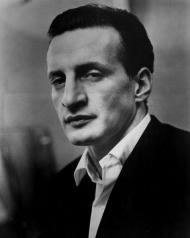A
transistor radio is a small portable radio receiver that uses transistor-based circuitry. Following their development in 1954 they became the most popular electronic communication device in history, with billions manufactured during the 1960s and 1970s. Their pocket size sparked a change in popular music listening habits, allowing people to listen to music anywhere they went.
BackgroundBell Laboratories demonstrated the first transistor on December 23, 1947. The scientific team at Bell Laboratories responsible for the solid-state amplifier included William Shockley, Walter Houser Brattain, and John Bardeen. After obtaining patent protection, the company held a news conference on June 30, 1948, at which a prototype transistor radio was demonstrated.
There are many claimants to the title of the first company to produce practical transistor radios, often incorrectly attributed to Sony (originally Tokyo Telecommunications Engineering Corporation). Texas Instruments had demonstrated all-transistor AM (amplitude modulation) radios as early as May 25, 1954, but their performance was well below that of equivalent vacuum tube models. A workable all-transistor radio was demonstrated in August 1953 at the Düsseldorf Radio Fair by the German firm Intermetall. It was built with four of Intermetall's hand-made transistors, based upon the 1948 invention of the "Transistron"-germanium point-contact transistor by Herbert Mataré and Heinrich Welker. However, as with the early Texas Instruments units (and others) only prototypes were ever built; it was never put into commercial production. RCA had demonstrated a prototype transistor radio as early as 1952 and it is likely that they and the other radio makers were planning transistor radios of their own, but Texas Instruments and Regency Division of I.D.E.A., were the first to offer a production model starting in October 1954.
The use of transistors instead of vacuum tubes as the amplifier elements meant that the device was much smaller, required far less power to operate than a tube radio, and was more shock-resistant. Since the transistor base draws current, its input impedance is low in contrast to the high input impedance of the vacuum tubes. It also allowed "instant-on" operation, since there were no filaments to heat up. The typical portable tube radio of the fifties was about the size and weight of a lunchbox, and contained several heavy, non-rechargeable batteries— one or more so-called "A" batteries to heat the tube filaments and a large 45- to 90-volt "B" battery to power the signal circuits. By comparison, the "transistor" could fit in a pocket and weighed half a pound, or less, and was powered by standard flashlight batteries or a single compact 9-volt battery. (The now-familiar 9-volt battery was introduced for powering transistor radios.)
Listeners sometimes held an entire transistor radio directly against the side of the head, with the speaker against the ear, to minimize the "tinny" sound caused by the high resonant frequency of its small speaker enclosure. Most radios included earphone jacks and came with single earphones that provided only mediocre-quality sound reproduction. To consumers familiar with the earphone-listening experience of the transistor radio, the first Sony Walkman cassette player, with a pair of high-fidelity stereo earphones, would provide a greatly contrasting display of audio fidelity.

